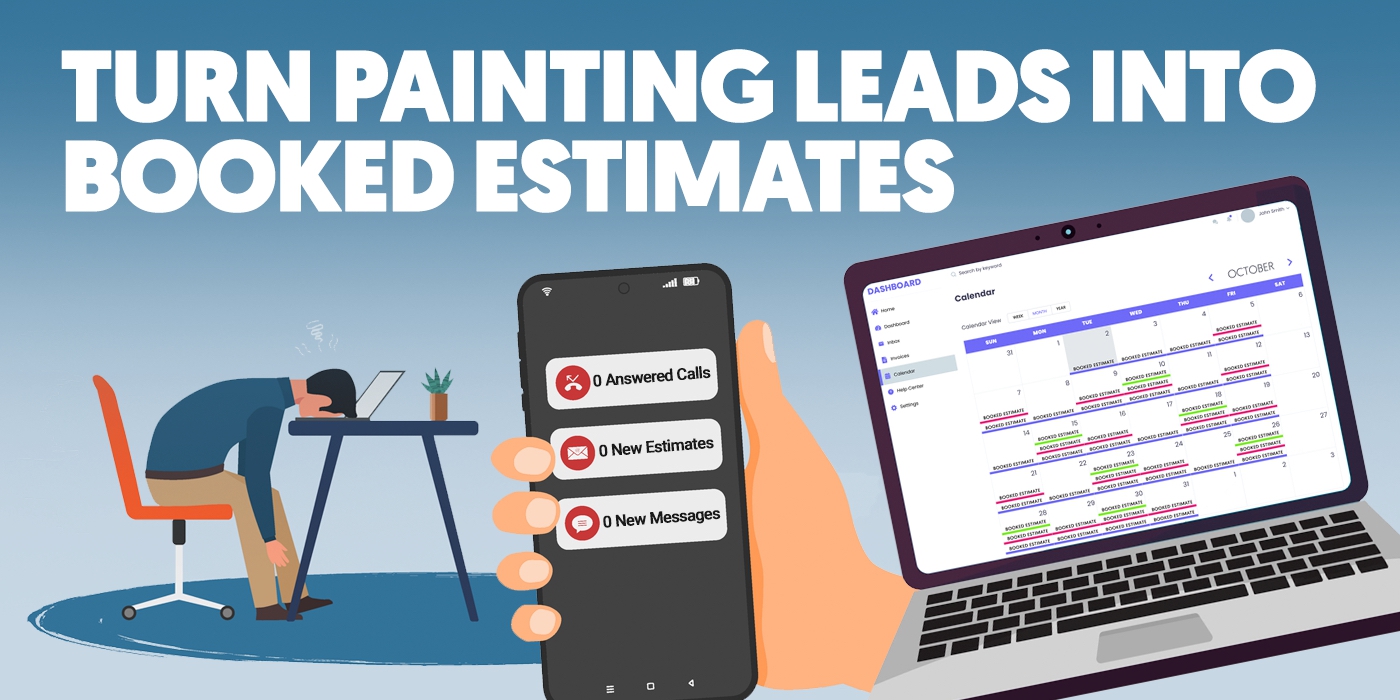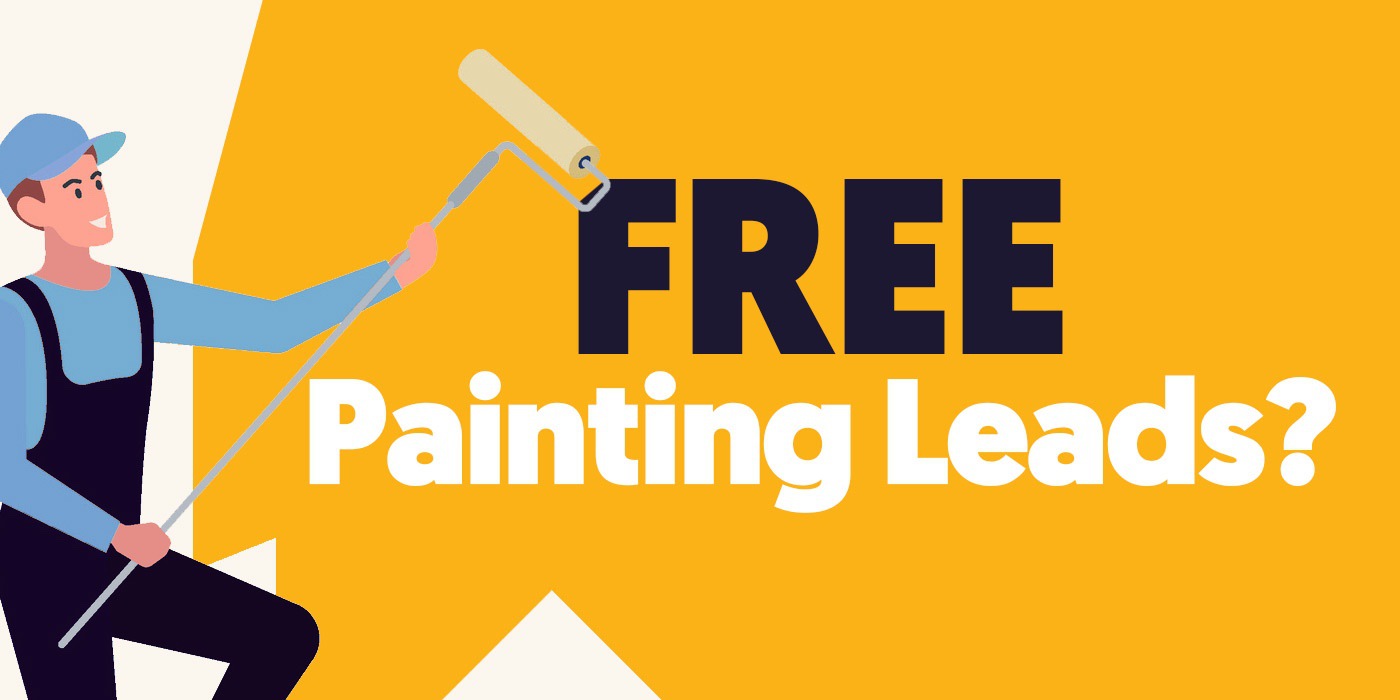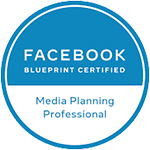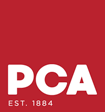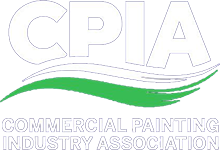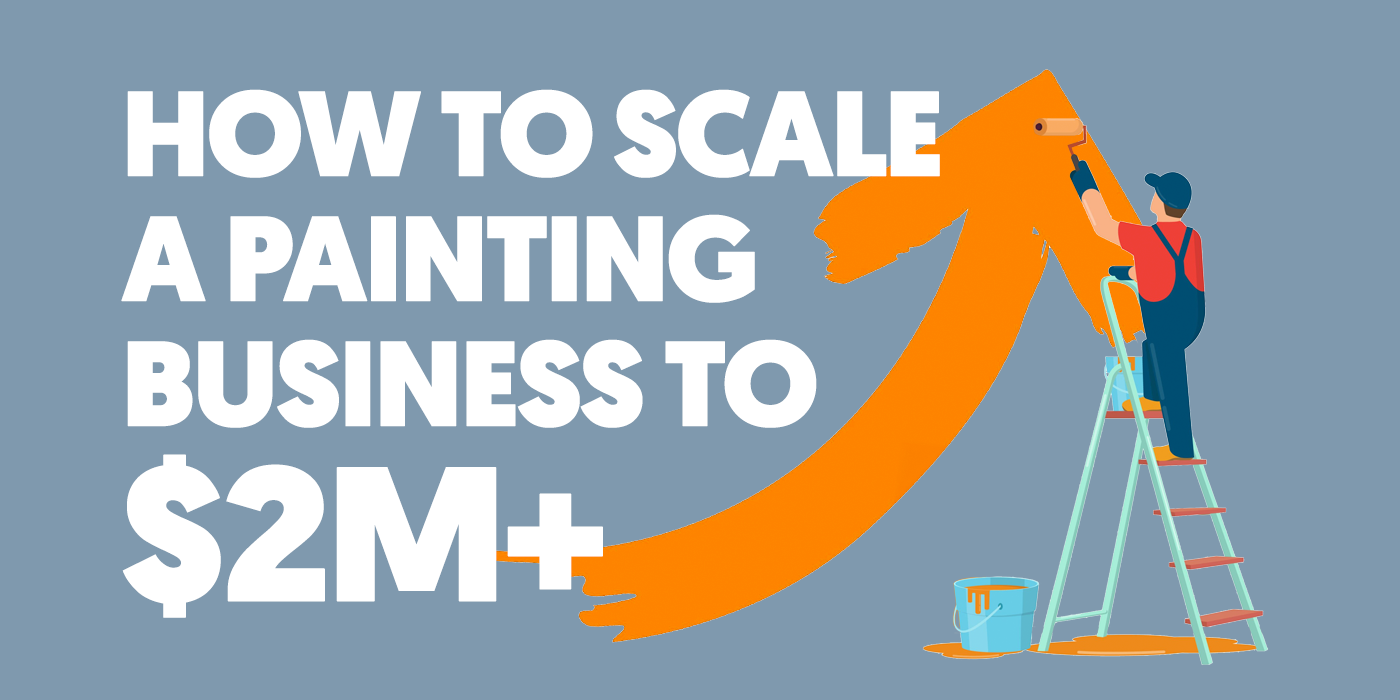
Scaling a painting business beyond $500K (where most of this industry plateaus) demands more than just working harder — it requires a shift from reactive hustle to strategic systemization.
Early growth often comes from referrals and sheer persistence.
However, to reach multiple seven figures, you must optimize for profitability, track production, and build operational depth.
Let’s break down the essential systems, margins, and financial strategies used by some of our top-performing Residential Painting Companies to scale with confidence and clarity!
The Four Revenue Phases of Painting Business Growth
Scaling a painting business involves a series of predictable revenue stages. Each phase comes with its own challenges, priorities, and systems that must evolve as the business grows.
Understanding these stages can help you set realistic expectations and take proactive steps toward growth.
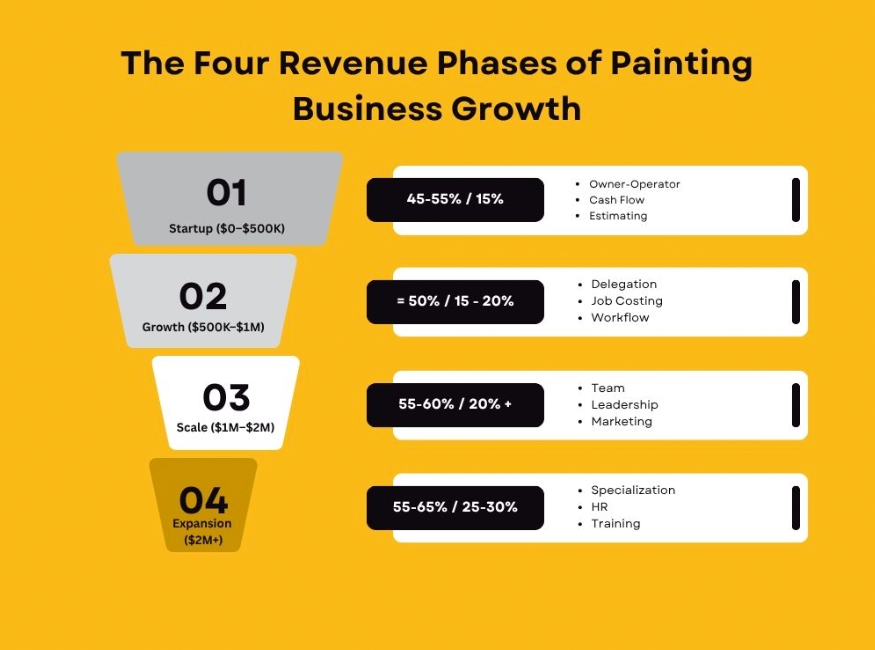
1. Startup ($0–$500K)
Welcome to the owner-operator stage, where business founders handle every aspect of operations and fulfillment, from estimating to painting.
2. Growth ($500K–$1M)
The delegation phase is where owners transition from hands-on production to focusing on sales and estimating, implementing core systems like standardized estimating templates and job costing reviews through improved SOPs and internal training programs.
Key systems at this stage:
Production rate tracking becomes more valuable than hourly billing. If it takes you 4 hours to paint a room but the industry average is 2, you’re losing twice the money.
3. Scale ($1M–$2M)
The systematization stage is where leadership and technology become critical for growth, requiring specialized roles like estimators and production managers. KPI tracking is a requirement at this stage.
Track labor and materials as percentages of revenue, targeting:
4. Expansion ($2M+)
The specialization phase is where owners become pure business leaders, overseeing specialized teams that require robust hiring and training systems to remain removed from day-to-day operations.
You need:
💰 Financial Benchmarks & Margin Optimizations
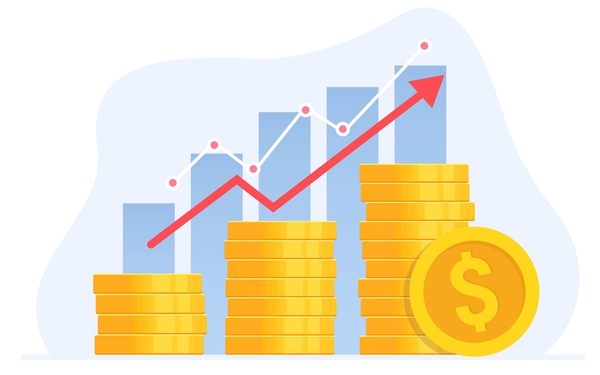
Yes, this is a boring topic, but it’s CRITICAL for growth that allows you to sleep well at night. More so, profitability isn’t just about top-line growth — it’s about how much you keep!
Painting Contractors who scale successfully have clear targets for labor, materials, and marketing investments.
Let’s take a look at some granular margin benchmarks in this industry:
Labor Margins
Labor margins above 30% are signs of operational failures, inefficient crews, underpricing, or poor management
Since labor is your largest controllable expense, small improvements create exponential profit gains.
Best-in-class companies use:
Material Margins
Material standardization ensures predictable costs, reduces waste, and strengthens supplier negotiations.
Every additional paint line multiplies complexity while weakening your buying power.
Here’s a list of ways you can control material costs in a painting business:
Marketing Margins
High marketing spend at scale indicates unsustainable customer acquisition costs.
Channels such as SEO and your Google Business Profile optimization compound over time, unlike paid ads, creating free visibility that reduces acquisition costs and funds operational improvements or competitive pricing.
Highest ROI digital channels include:
Systems That Enable Scalable Growth 🧐
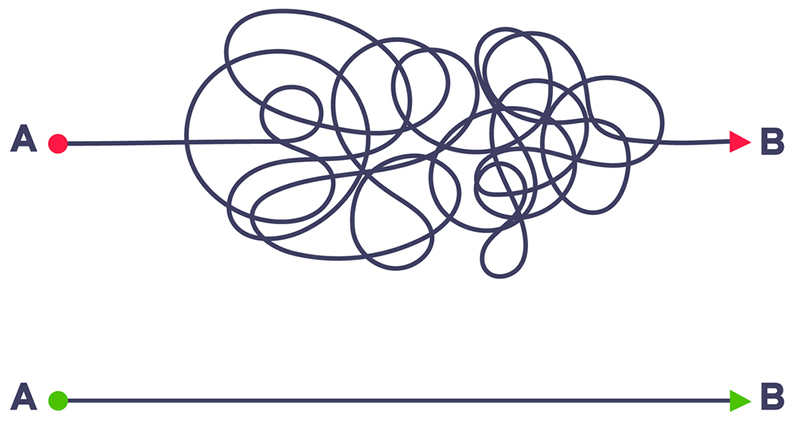
To scale from $500K to $2M+, you need systems that deliver consistency, efficiency, and accountability. Without them, growth creates chaos.
The following operational pillars form the foundation of a predictable and profitable painting business.
Estimating: Production Rates!
Production rates are the best way to estimate because they tie your pricing directly to how long tasks actually take, based on real data.
This makes your estimates consistent, scalable, and easy for others on your team to follow. It also creates a feedback loop — every job you complete helps refine your numbers, making future estimates even more accurate.
“Amateurs guess. Professionals measure. Production rates let you price, schedule, train, and scale without being chained to your gut feeling.” – Nick Slavik
With production rates, you’re not guessing; you’re pricing with math, which protects your margins, improves scheduling, and builds confidence in your sales process.
Formula: (Labor Hours × Hourly Rate) + (Materials × 1.5) + 20% Profit Buffer
This formula ensures job profitability and protects net margins from scope creep.
Production Scheduling
Production scheduling ensures your crews stay consistently busy, jobs start and finish on time, and your cash flow remains steady.
Without a solid schedule, you end up with gaps, rushed jobs, or overbooked crews — all of which hurt profit and customer satisfaction.
A strong schedule helps you balance sales volume with your crew capacity, keeps projects flowing smoothly, and allows you to forecast labor needs and revenue with much more accuracy.
Quality Assurance
Quality assurance is about delivering consistent, high-level work on every job, which protects your reputation and reduces costly callbacks.
The goal is to catch issues before the customer does, using clear checklists, site inspections, and crew training.
Targets include:
The tighter your QA process, the more scalable, profitable, and PREDICTABLE your business becomes!
Leadership & Delegation 👥

One of the most pivotal shifts in a growing business is moving from doing to leading. At some point, what got you here won’t get you there.
Building a leadership culture and delegating tasks based on impact and capacity unlocks the next level of growth.
The 30% Rule
If any task takes up 30% of your week, it’s time to train and delegate it.
At $1M+, the owner’s role becomes strategy and culture — not estimating, painting, or scheduling.
To create a culture of leaders, you must:
Build a Culture of Leaders
Building a strong team culture of Leaders requires intentional structure that keeps everyone aligned, invested, and improving.
Examples: daily huddles for alignment, profit-sharing for investment, and transparent scoreboards for KPI ownership.
This kind of cultural infrastructure turns employees into engaged team members who care about the RESULTS.
Here are a few other culture-building strategies you can implement TODAY:
Brand & Niche Positioning

As your business scales, strategic positioning becomes just as important as production.
The most successful Painting Companies don’t sell to everyone — they specialize, differentiate, and dominate specific markets!
Specialization Examples
Premium Differentiators
Systems Over Sweat
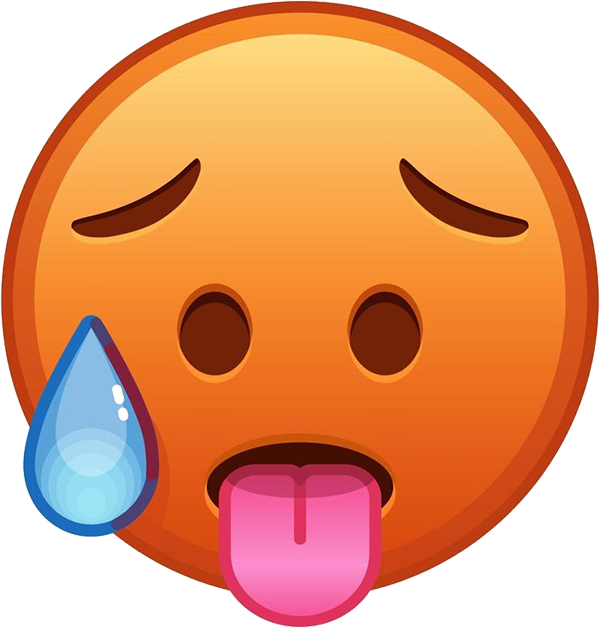
Reaching $2M in revenue isn’t about painting more or faster — it’s about building a self-sustaining business machine.
The leap from $500K to $2M+ is rarely made by chasing more jobs — it’s made by refining margins, delegating responsibilities, standardizing production, and positioning your brand for premium value.
When you implement the right financial controls, production systems, and leadership structure, growth becomes predictable, and your business can scale without sacrificing quality or burning out, YOU, The Owner.
🚀 Ready to Scale Smarter, Not Harder?
At Base Coat Marketing, we specialize in helping painting companies build systems that generate real business growth 👇



